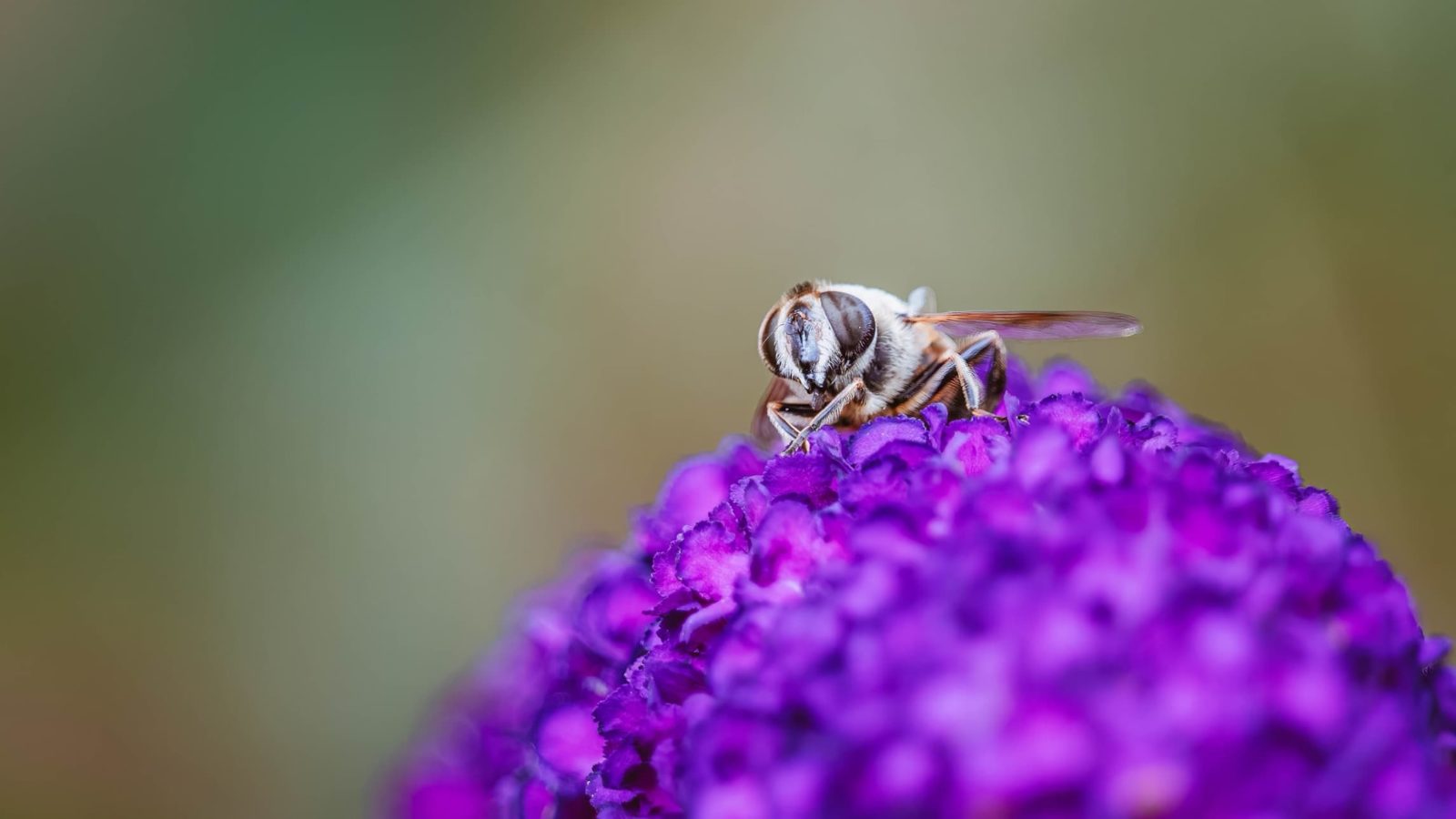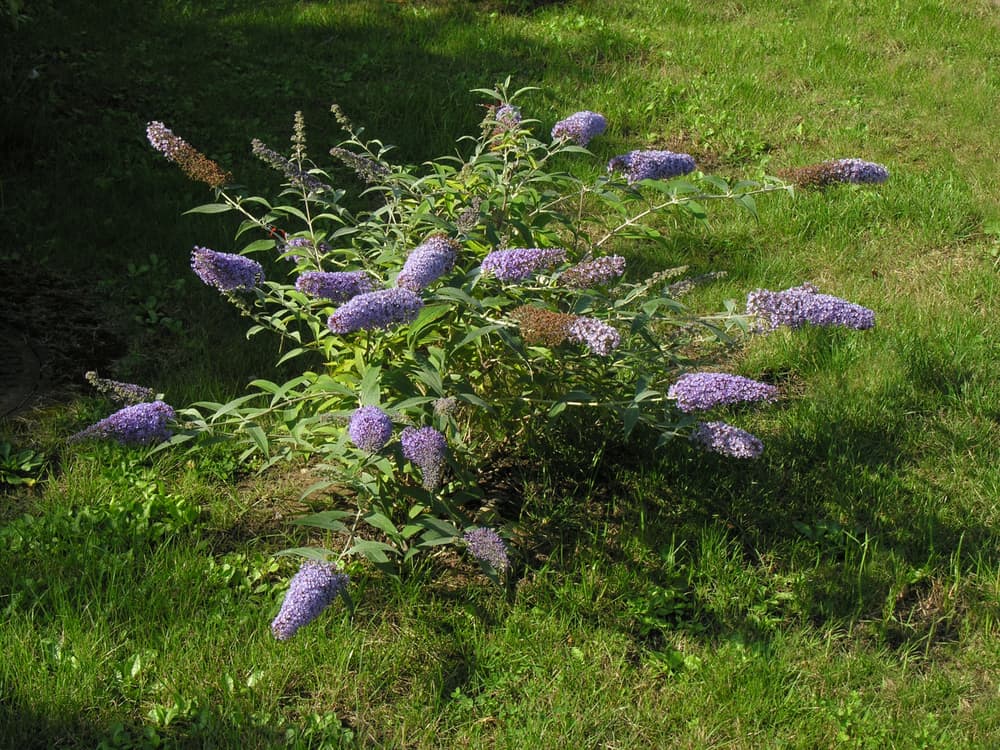Did You Know ‘Dwarf’ Buddleja Are Now Available? They’re Perfect For Small Gardens


Elizabeth is a Permaculture Garden Designer, Sustainability Consultant and Professional Writer, working as an advocate for positive change. She graduated from the University of St. Andrews with an MA in English and Philosophy and obtained a Diploma in Applied Permaculture Design from the Permaculture Association.
Reviewed By PETER LICKORISH

Peter is a Horticulture Lecturer and self-employed Horticulturist, with a passion for diverse areas of the industry - from garden design to the science behind plant growth and propagation. He has completed the Royal Horticultural Society’s Master of Horticulture (MHort) Award and lectures on RHS courses at Bedford College.
IN THIS GUIDE
BUDDLEJA GUIDES
Buddleja is a wildlife-friendly plant that can thrive in many settings and a dwarf option could be perfect for small spaces.
A native of China, Buddleja davidii is now an extremely popular garden plant.1Ebeling, S., & Tallent-Halsell, N. (2009). Buddleja davidii (butterfly bush). CABI Compendium, CABI Compendium. https://doi.org/10.1079/cabicompendium.10314
Its appeal for butterflies means that it is sometimes referred to as ‘Butterfly Bush’.
But care should be taken over planting and caring for Buddleja, or ‘Buddleia’, since it is a non-native plant and some species can become invasive in some areas.2Invasive Shrubs to be Aware of in Your Garden. (n.d.). The RSPB. Retrieved March 13, 2023, from https://www.rspb.org.uk/birds-and-wildlife/advice/gardening-for-wildlife/plants-for-wildlife/shrubs-for-gardens/invasive-shrubs/
If you grow a non-sterile Buddlejia davidii in your garden, it is always best not to let it go to seed – cut back after flowering to prevent its spread.
Overview
| Botanical Name | Buddleia davidii: Dwarf cultivars |
| Common Name(s) | Dwarf Buddleia, Dwarf Butterfly Bush |
| Plant Type | Shrub |
| Native Area | China |
| Hardiness Rating | H6 |
| Foliage | Serrated edges and dark leaves |
| Flowers | Long taped clusters in various hues |
| When To Sow | March, April, May, September, October, November |
| Flowering Months | July, August, September |
| When To Prune | March, April |
Sunlight
Preferred
Full Sun or Partial Shade
Exposure
Exposed or Sheltered
Size
Height
0.5 – 1.2M
Spread
0.5 – 1.2M
Bloom Time
July – September
Soil
Preferred
Most soil types
Moisture
Moist but well-drained
pH
Any
Buddleia davidii can spread its seed far and wide if given the chance.
Even when not allowed to go to seed, Buddleia is not always a good choice for smaller gardens.
Most grow into huge, towering plants, over 2m tall, which means that they are not always the best choice for small spaces.
However, there are now Dwarf Buddleja available, which could be a better choice for small gardens.
What Is Dwarf Buddleja?

Dwarf buddleias are cultivars of Buddleja davidii, many of which grow to only around 60-90cm tall.
Since they are restricted in size, they can be a much better choice for small spaces, or for container cultivation.
The good news is that there are several series of Dwarf Buddleja which have also been developed to be sterile, so they cannot set seed and become invasive.
“Dwarf Buddleja could be used in the garden like a herbaceous perennial and planted in a mixed border, combining different flower colours,” says Peter Lickorish, a Professional Gardener who also lectures in horticulture.
“When other herbaceous perennials die down, low domes of dwarf buddlejas will add height and structure, with many retaining some of their silvery-green foliage over winter.”
Dwarf Buddleja Cultivars

Dwarf Buddlejas to consider are:
- B. davidii ‘Buzz Magenta’
- B. davidii ‘Buzz Ivory’
- B. davidii ‘Buzz Candy Pink’
- B. davidii ‘Buzz Indigo’
- B. davidii ‘Buzz Sky Blue’
- B. davidii ‘Buzz Velvet’
- B. ‘Blue Chip’
- B. ‘White Chip’
- B. ‘Lilac Chip’
- B. Flutterby Petite Dark Pink
- B. Flutterby Petite Blue Heaven
- B. Flutterby Petite Snow White
- B. Flutterby Petite Tutti Fruitti
- B. Flutterby Flow Lavender
The above options are sterile, and so will not cause the problems potentially caused by planting other Buddleia davidii in your garden.
Why Grow Dwarf Buddleja?
Dwarf Buddleja could be a good choice for your garden.
It is overall a wildlife-friendly option and certainly will attract butterflies and other insects to your garden – and when you choose a sterile cultivar you need not worry about invasiveness.
However, before you proceed with a Dwarf Buddleia, it is certainly worth considering other alternatives, which can also do a great job of attracting butterflies and other wildlife to your garden.
Downsides
While Buddleja is a great source of nectar for adult butterflies and other insects, as a non-native plant it has little or no value for the larvae of native butterflies and moths.3Position statement on Buddleia and its planting in the UK. (n.d.). Butterfly Conservation. Retrieved March 13, 2023, from https://butterfly-conservation.org/sites/default/files/1.bc-position-statement-on-buddleia-updated-2015.pdf
This tradeoff means that opinions are mixed as to its growth in UK gardens.
If you want to do as much as you can for native wildlife, you should also consider planting plenty of native plants.
Dwarf Buddleja Alternatives
In the UK and Europe, some native shrubs and small trees are far better for a truly butterfly-friendly garden, because they provide for Lepidoptera throughout their lifecycle and not just for nectar.

You can consider, for example:
- Blackberries
- Buckthorns
- Currants
- Dogwoods
- Elder
- Gorse
- Hawthorn
- Native Roses
- Native Viburnums
- Willows
If you want to aid butterflies and attract them to your garden, you should also plant fruit trees (remember that there are dwarf fruit trees that you can grow in containers).
Fallen fruits are a food source for butterflies, and trees often also give moth and butterfly species shelter and a place to see out the winter.410 ways to help butterflies and moths this autumn. (n.d.). Butterfly Conservation. Retrieved March 13, 2023, from https://butterfly-conservation.org/news-and-blog/10-ways-to-help-butterflies-and-moths-this-autumn
Place perennial herbs and nectar-rich perennials in pots nearby, or in guilds around these trees – many herbs and flowers are great for attracting butterflies and other beneficial insects to your garden.
You should also consider growing climbers like ivy and honeysuckle against a wall or fence.
These can provide nectar when there is not much around, and serve as a place for butterflies to lay their eggs.
If you would like to consider other flowering shrubs for your small garden or a patio container garden, there are also other non-native options to consider.

Some other good nectar sources for adult butterflies include:
How To Grow Dwarf Buddleja
If you do decide that you would like to plant a dwarf Buddleja, then remember that where you place your new plant (whether in the ground or in a container) is important.
Buddleia needs full sun, and a south-facing or west-facing aspect is ideal.
The plant is H6 hardy however, and can cope with a wide range of different growing conditions.
Soil Requirements
If growing in the ground, remember that your plant will prefer a chalk, loam or sandy soil, and any pH is fine.
Dwarf buddleja may struggle a little in heavy clay – although this plant does like some moisture, it generally prefers well-drained conditions.
One interesting option to consider could involve growing dwarf buddleia as a low-growing hedge, either along a border of your property or between different garden ‘rooms’.
Container Growing
Of course, these are also great for growing in reasonably large patio pots.
When growing in containers, choosing a free-draining growing medium, and ensuring that the container drains freely, is key.
“They do, however, still require generous watering to prevent large leaves from wilting,” shares Peter.
While you can get away with a smaller pot initially, for plants that typically come in 2-3 litre containers, ultimately, a Dwarf Buddleja will require a container that is around 60cm wide.
It is best to fill your container with a peat-free multipurpose potting compost with added John Innes (or a homemade equivalent).
Planting Dwarf Buddleja
You should find it easy to source a Dwarf Buddleja from a garden centre online or in your local area.
If someone has a buddleia that you admire, you may also be able to propagate it to make a new plant by taking semi-ripe cuttings in summer.

When planting dwarf buddleia, place the plant in a hole in the soil or in a container at the same level that they were at in their previous pot.
This can be done at any time, but spring or autumn is generally best, to reduce the shock of transplantation.
Dwarf Buddleja Care
Dwarf buddleja is generally very easy to care for and even in containers is pretty low maintenance and a trouble-free shrub, but there are a few things to remember:
Watering
Remember that Buddleia like free-draining conditions, and do not like waterlogging for any length of time.
Plants grown in the ground should be watered for the first 18 months or so during establishment, but should not require any watering after that except during prolonged periods of drought.
Container plants will need to be watered more frequently than those growing in the ground.

Water when the growing medium dries out during dry periods.
Remember, whether growing in the ground or in containers, a layer of organic mulch will help to retain moisture.
Feeding
Feed your container-grown Buddleia in spring with an organic, high-potassium feed to encourage good-quality blooms.
If growing in containers, you should also use a potash-rich organic liquid feed like comfrey tea when watering over the summer months.
Plants grown in fertile soil should only need an annual mulch of organic matter, and will not need additional feeding.
Deadheading
When flowers on your Buddleia begin to fade over the summer, deadhead them to encourage new smaller blooms to form.
At the end of the season, leave the faded flower heads in place (when growing sterile varieties) to give more cover for wildlife over the winter months.
Pruning
Like other types of Buddleja, Dwarf Buddleja should be pruned back hard over the first couple of years to a low framework (around 20-30cm above the ground or surface of the growing medium) in the spring.
It is best to prune in March or April, just as the first new growth is starting to show.
After around 2 years, prune back to leave around two buds on the growth of the previous year.
You should also make sure that you also remove any dead, damaged or diseased stems – be sure to mulch around your shrubs with organic matter and feed well after this spring pruning.
See more buddleja pruning tips in this guide.
Repotting
If you are growing your Dwarf Buddleja in a container, it should typically be repotted every couple of years.
Dwarf Buddleja will typically be relatively trouble-free, and you should find that if you do choose one, and take care of it correctly, it will grace your garden for many years to come.
Just remember that if butterfly attraction is high on your list, the ‘butterfly bush’ is not actually the best plant to choose in the UK.
References
- 1Ebeling, S., & Tallent-Halsell, N. (2009). Buddleja davidii (butterfly bush). CABI Compendium, CABI Compendium. https://doi.org/10.1079/cabicompendium.10314
- 2Invasive Shrubs to be Aware of in Your Garden. (n.d.). The RSPB. Retrieved March 13, 2023, from https://www.rspb.org.uk/birds-and-wildlife/advice/gardening-for-wildlife/plants-for-wildlife/shrubs-for-gardens/invasive-shrubs/
- 3Position statement on Buddleia and its planting in the UK. (n.d.). Butterfly Conservation. Retrieved March 13, 2023, from https://butterfly-conservation.org/sites/default/files/1.bc-position-statement-on-buddleia-updated-2015.pdf
- 410 ways to help butterflies and moths this autumn. (n.d.). Butterfly Conservation. Retrieved March 13, 2023, from https://butterfly-conservation.org/news-and-blog/10-ways-to-help-butterflies-and-moths-this-autumn
